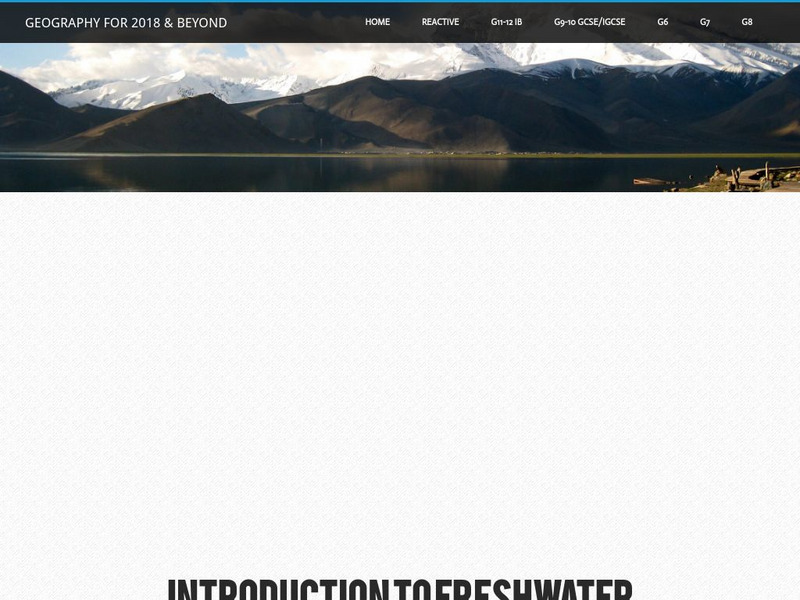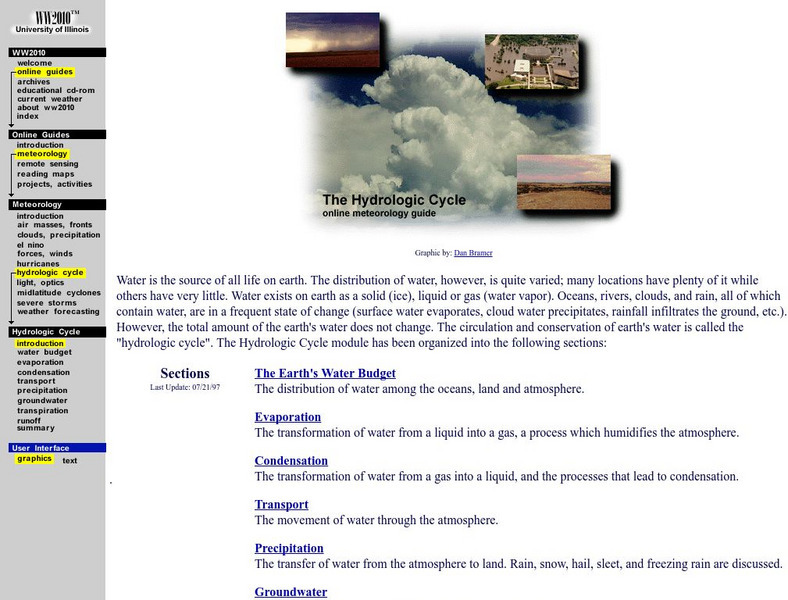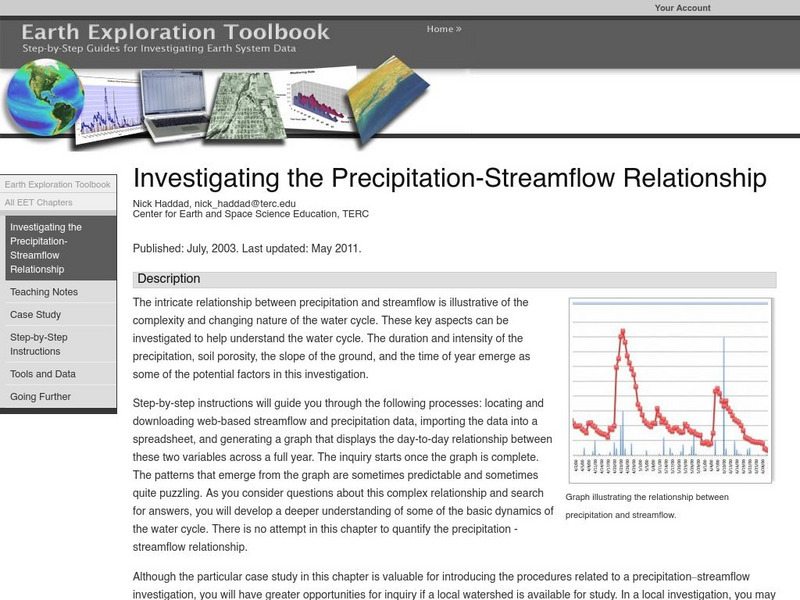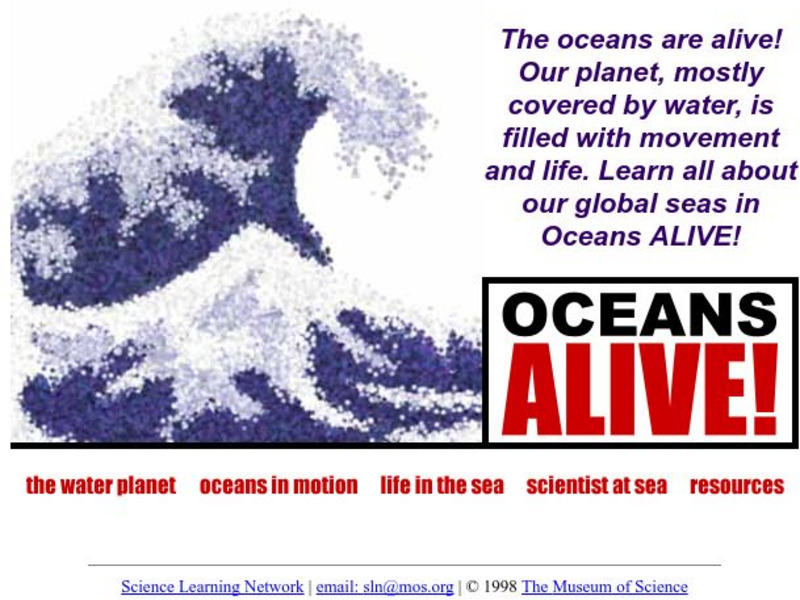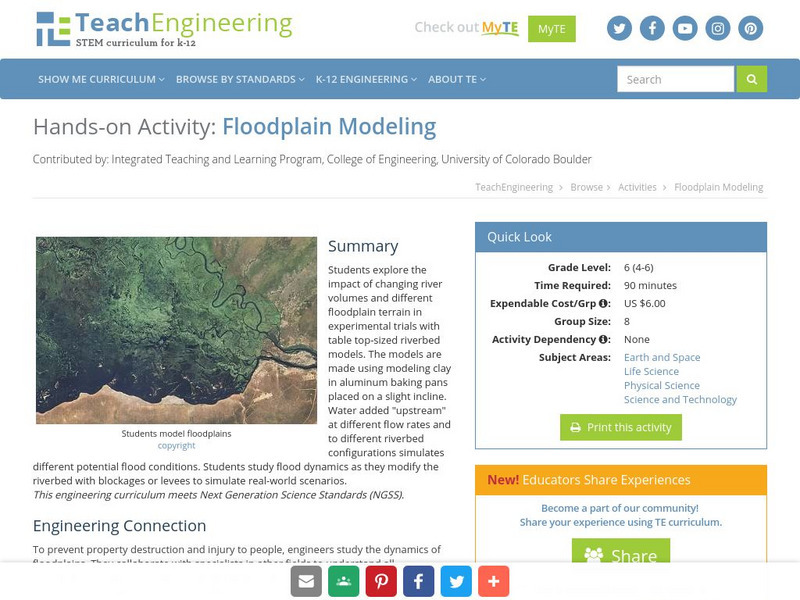Hi, what do you want to do?
University Corporation for Atmospheric Research
Ucar: The Water Cycle
Water can be in the atmosphere, on the land, in the ocean, and underground. It moves from place to place through the water cycle.
BioEd Online
Bio Ed Online: The Water Cycle and Global Warming
For this lesson plan, students will trace the flow of water in the environment, investigate simulated effects of global temperature change on oceanic levels, evaluate changes within the water cycle, and explain several different...
University Corporation for Atmospheric Research
Ucar: Climate & Water Teaching Box
Investigate water in a warmer world. This teaching box is filled with explorations and readings that help secondary students learn how climate change is affecting the water cycle.
Geographypods
Geographypods: Freshwater: Issues and Conflicts: The Water System
This learning module examines the Earth's stores of fresh water and how the balance between stores of water in the oceans and in ice is changing. Students then investigate how a maximum sustainable amount of freshwater can be achieved by...
PBS
Pbs Learning Media: Earth's Water Movements
The paths that water can take through Earth's systems are many and complex. Examine the following diagram from NASA depicting the water cycle. Studying the water cycle is important because changes in the water cycle affect all parts of...
University of Illinois
University of Illinois Urbana Champaign: The Hydrologic Cycle
Water is the source of life on earth. It exists in many forms and is constantly changing. The circulation and conservation of earth's water is called the hydrologic (or water) cycle. Find out how water evaporates, condensates,...
Science Education Resource Center at Carleton College
Serc: Investigating the Precipitation Streamflow Relationship
The intricate relationship between precipitation and streamflow is illustrative of the complexity and changing nature of the water cycle. These key aspects can be investigated to help understand the water cycle. The duration and...
BBC
Bbc Schools: Ks2 Bitesize: Science: Materials: Changing States
Investigate the changing states of water as you help Steve stay alive while in the Arctic. Includes background information about changing states of matter and about the water cycle, as well as a quiz.
Massachusetts Institute of Technology
Mit: Open Course Ware: Courses: Civil Environmental: Ecology I: The Earth System
College-level online course highlighting the fundamentals of ecology. Course topics include coevolution of the biosphere, geosphere, atmosphere, and hydrosphere; photosynthesis and respiration; and the carbon, nitrogen, and water cycles....
University Corporation for Atmospheric Research
Ucar: Cycles of the Earth System: Make Convection Currents!
For this lesson, students will understand that temperature changes can cause density changes in water and in air.
NOAA
Noaa: The Ocean's Role in Weather and Climate
A collection of resources - interactive activities and teacher tutorials - on the impact the ocean has on weather and climate.
Other
The Hydrological Cycle an Human Impact on It. [Pdf]
The hydrological cycle is usually called a recurring consequence of different forms of movement of water and changes of its physical state on a given area of the Earth. The role of different processes in the hydrological cycle and their...
University Corporation for Atmospheric Research
Ucar: Just a Phase: Water as a Solid, Liquid, and Gas
This site helps students construct a model of the arrangement of water molecules when present as solid, liquid or gas. Includes background information, lesson plans, links to standards and assessment ideas.
American Chemical Society
Middle School Chemistry: Changing State Condensation
Explore the process of condensation as it pertains to molecular movement in water vapor.
Museum of Science
Museum of Science: Oceans Alive
There are links to the water planet, oceans in motion, life in the sea and resources. You will learn about the physical features of an ocean, changes in the ocean and the water cycle.
National Geographic
National Geographic: Sources, Sinks, and Feedbacks
Students will learn about how the Earth's carbon cycle works, as they examine the relationship between levels of carbon dioxide and water vapor in the atmosphere and the temperature of the ocean's surface. Includes online student...
TeachEngineering
Teach Engineering: Floodplain Modeling
Students explore the impact of changing river volumes and different floodplain terrain in experimental trials with table top-sized riverbed models. The models are made using modeling clay in aluminum baking pans placed on a slight...
Science Buddies
Science Buddies: Swimming in Acid: Understanding Ocean Acidification
The oceans are a precious natural resource, part of Earth's carbon cycle. But what happens if the oceans absorb too much carbon dioxide? Many scientists are concerned that the increased absorption of carbon dioxide is causing them to...
PBS
Pbs Learning Media: Nisqually Glacier at Mount Rainier
Observe the Nisqually Glacier at Mount Rainier in this video segment from NatureScene. [4:07]
US Geological Survey
Usgs: "Thirsty? How 'Bout Seawater?"
This U.S. Geological Survey website explains the desalinization method used by some communities to change sea water into drinking water. Click Home to access the site in Spanish.







